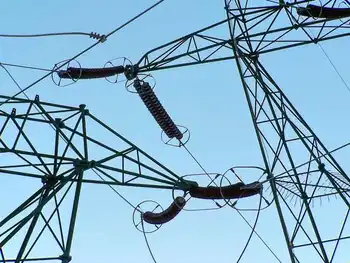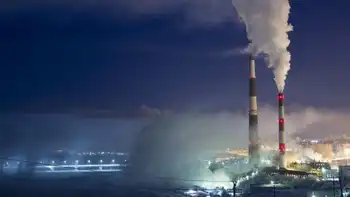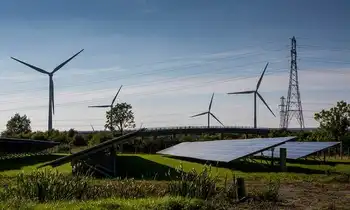TEPCO hopeful for quick cold shutdown
FUKUSHIMA, JAPAN - Japan’s Tokyo Electric Power said it hoped to achieve a “cold shutdown” of its crippled Fukushima Daiichi nuclear plant in six to nine months, setting a time frame for bringing the world’s worst nuclear crisis in 25 years under control.
Within three months Tokyo Electric said it planned to cool reactors and spent fuel at the nuclear plant to a stable level and get radiation leaks on a downward trend.
In another three to six months Asia’s largest utility aims to secure a “cold shutdown” at the plant, a state in which the water cooling fuel rods is below 100 C and the reactors are considered stable.
The firm, commonly known as TEPCO, has been struggling to stabilize the Fukushima complex 240 kilometres north of Tokyo, which was seriously damaged by the March 11 earthquake and tsunami and has been leaking radiation.
Shares of TEPCO, a blue-chip firm established 60 years ago, have lost three-fourths of their value since the quake amid worries over whether it would survive the crisis, with one analyst estimating compensation claims could reach $130 billion.
“This is the biggest crisis since the founding of our company,” TEPCO Chairman Tsunehisa Katsumata told a briefing in Tokyo, adding that he would likely resign to take responsibility, possibly after a shareholders’ meeting in June.
“Getting the nuclear plant under control, and the financial problems associated with that. How we can overcome these problems is a difficult matter.”
JapanÂ’s crisis has now been rated on par with the worldÂ’s worst nuclear accident at Chernobyl in 1986, although the total amount of radiation released is only a fraction of when the nuclear plant in Ukraine exploded.
TEPCO and the government have been under pressure to offer a road map for containing the crisis and to clarify when those who have had to evacuate the area around the damaged plant will be able to go home.
Prime Minister Naoto Kan has faced criticism over comments, which he later denied making, suggesting evacuees may not be able to return for 10 or 20 years.
After achieving a cold shutdown at the six-reactor plant, TEPCO said it would then focus on longer-term issues such as encasing the reactor buildings, cleaning up contaminated soil, and removing nuclear fuel to a safe holding place.
Two of the reactors are already in a stable state.
“I think it is doable, given the information TEPCO has released until now,” said a Japan-based university professor about the six to nine month time frame. The professor asked not to be quoted by name.
“But there are still so many issues that are unknown, and when you multiply the unknowns by four reactors, it is hard to say whether or not this is a realistic target.”
TEPCO has yet to determine how much it will have to pay residents and businesses uprooted by the crisis. The government has expanded a 20-km evacuation zone around the plant because of high-accumulated radiation.
JP Morgan has estimated TEPCO could face 2 trillion yen US $24 billion in compensation losses in the financial year that started this month, while Bank of America-Merrill Lynch has said the bill could reach $130 billion if the crisis continues.
The government is scrambling to come up with a scheme to limit the liability of TEPCO, which supplies roughly a third of JapanÂ’s electricity and whose failure would likely destabilize the financial markets.
TEPCO had $91 billion of debt on its books before the March crisis, and has since taken on a $24 billion bank loan. It is also the countryÂ’s largest corporate bond issuer and its shares are widely held by financial institutions.
Katsumata said TEPCO was considering selling assets and other restructuring steps to pay for compensation, but that it would need government help.
“We cannot answer anything about compensation until the government’s scheme is in place. No amount of asset sales would be enough if TEPCO were to shoulder all of the compensation,” he said.
“So we have been saying we want the government to decide the scheme immediately.”
The Nikkei newspaper reported earlier that TEPCO planned to sell shares in KDDI Corp. It holds about 360,000 shares in the telecoms firm, or an 8 per cent stake, which are worth about $2.2 billion at the current market price.
Katsumata did not comment specifically on its KDDI stake but said “we will do anything for rationalization, including asset sales and reduction in labour costs.”
Related News

Scientists Built a Genius Device That Generates Electricity 'Out of Thin Air'
LONDON - They found it buried in the muddy shores of the Potomac River more than three decades ago: a strange "sediment organism" that could do things nobody had ever seen before in bacteria.
This unusual microbe, belonging to the Geobacter genus, was first noted for its ability to produce magnetite in the absence of oxygen, but with time scientists found it could make other things too, like bacterial nanowires that conduct electricity.
For years, researchers have been trying to figure out ways to usefully exploit that natural gift, and they might have just hit pay-dirt with a device they're calling the…




